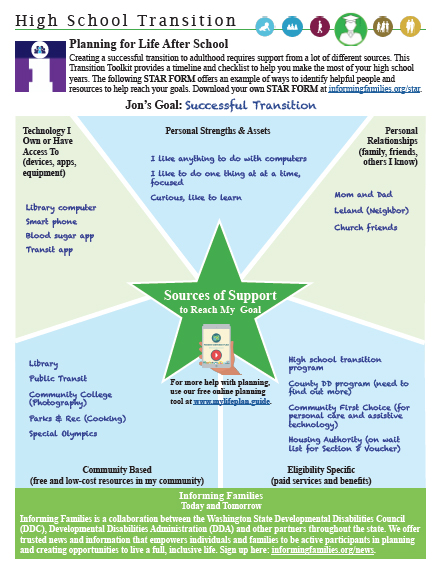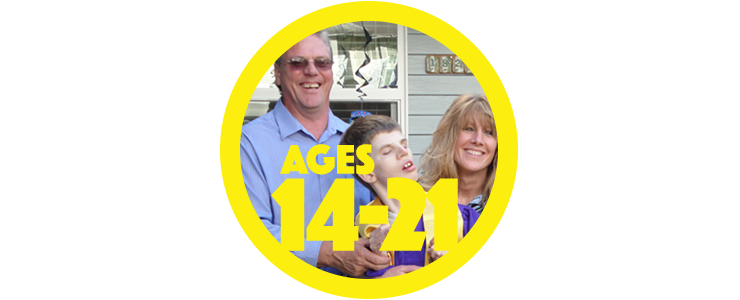During these years that your family member is immersed in school, make the most of the support they have to focus on emerging independent living skills, employment opportunities, and connections to your community. Typically, after age 21, school activities and school based services end. It is important to learn as much as you can about the road ahead so that you can begin to prepare your family member for a full life after school.
Although transition planning officially begins at age 16, you can start planning for life after school early as 14. In fact, many families recommend this as early as possible. Even with state and federal laws to ensure your family member’s right to an education, it’s important to speak up and ensure that their needs are being met.
To help you get the lay of the land, watch Navigating Your Way, Ages Fourteen to Twenty One for a bird’s eye view of services, supports and resources for this stage of life.
[If you have seen the video before and wish to skip the introduction, jump ahead to the :53 second mark.]
Additional Materials
Video Transcript for Ages 14-21 (Word)
High School Transition Toolkit
This four-page High School Transition Toolkit provides:
 A Star Form to help identify supports to reach a student’s transition goals.
A Star Form to help identify supports to reach a student’s transition goals.- Tips for transition planning and goal setting.
- Transition timeline of things to do from age 14-21.
- Transition checklist of skills, activities, and services when creating your child’s high school transition plan for his/her IEP.
- Ways to gain job skills during high school.
- Resources for post-secondary education.
Available in English and Spanish. Print and electronic format. Click here to order or download your copy.

